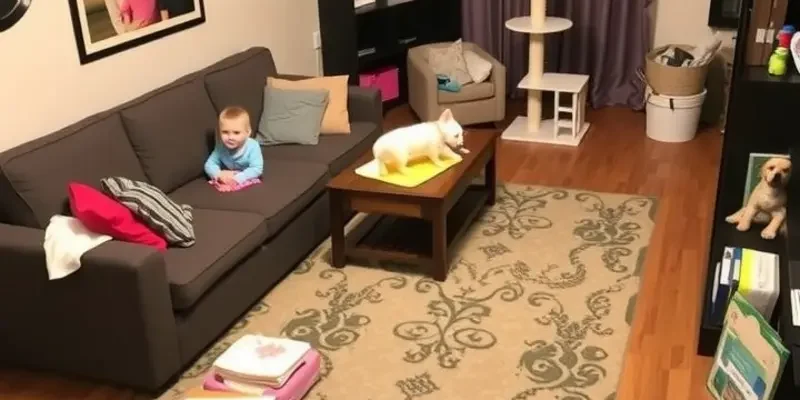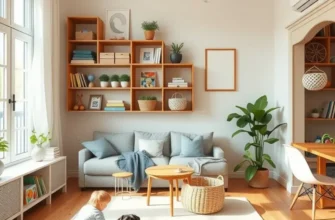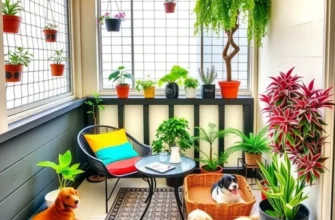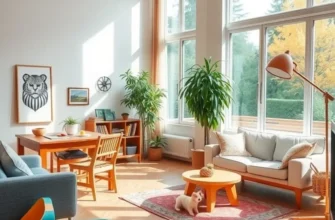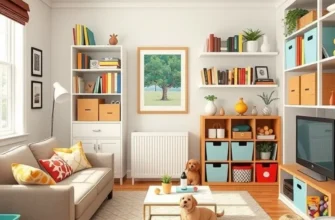Many families, pet owners, couples, and renters often seek a fulfilling way to make a difference in the lives of animals. Welcoming foster pets into your apartment can be a heartwarming experience that not only provides a loving home for animals in need but also enriches your family dynamic. The journey of sharing your living space with pets can be a beautiful adventure filled with joy and companionship. However, it also comes with unique considerations, especially in the context of apartment living. Understanding how to create a harmonious environment is essential. This article offers warm, practical, and reassuring advice to help you navigate the ins and outs of apartment living with foster pets. Whether you’re a first-time foster parent or looking to enhance your pet-friendly apartment, these tips and insights will empower you to create a safe and welcoming space for your new furry family members.
Creating a Pet-Friendly Apartment Space
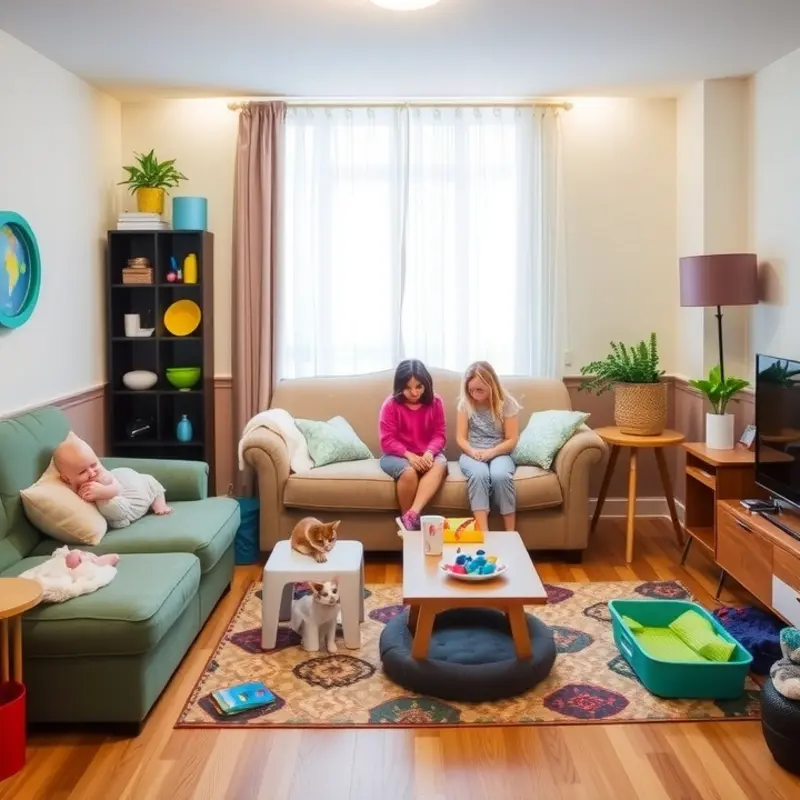
Understanding the diverse needs of pets is crucial when preparing your apartment for both your family and foster animals. Each pet type will have unique requirements, yet the overarching goal remains the same: ensure safety and comfort for everyone involved.
Understanding Various Needs: Cats vs. Dogs vs. Small Animals
Cats, for instance, require vertical space. Installing cat trees or shelves allows them to explore without taking up your limited floor space. Dogs need room to move, so try to keep the floor clutter-free. Meanwhile, small animals like rabbits or guinea pigs may require special enclosures to keep them safe and contained. Consider the temperament and energy level of each animal as you set up their areas.
Choosing Pet-Safe Furniture
Investing in robust, pet-safe furniture can save you a lot of hassle. Look for furniture made from stain-resistant materials, which can withstand claws and accidents. Avoid sharp edges, which can pose risks, especially for curious pets. Pet furniture such as beds and scratching posts should be stable and comfortable. Additionally, furniture height should be considered—tall items may need securing to prevent tipping if pets like climbing.
Creating Secure Areas for Play and Rest
Every pet needs a sanctuary. Designate specific areas for play and others for resting. Soft rugs can offer a cuddle-worthy spot for nap time. Use baby gates or adjustable dividers to keep certain areas off-limits without making your apartment feel like a labyrinth of barriers. Keeping a variety of toys available helps foster pets remain mentally stimulated and contented.
Managing Space to Prevent Accidents
Space management is pivotal in an apartment setting. Secure any potential hazards such as wires or small objects that could be ingested. Ensure cleaning supplies are stored out of reach. Consider using storage solutions like baskets to organize toys and supplies effectively. Visible and organized storage can even add to the apartment’s aesthetic. Explore ideas for organizing with apartment-friendly baskets.
Essential Supplies for Your Foster Pets
Compile a list of essential supplies prior to welcoming any pet. For dogs, this includes leashes, identification tags, and chew-proof bowls. Cats will need litter boxes and scratching posts. Small animals often require special bedding and chewable toys to keep their teeth healthy. Ensure you have these ready to make the transition smoother.
Introducing New Pets to the Apartment
Introducing a new foster pet should be a slow process. Allow the pet to explore a small, safe area initially to prevent them from being overwhelmed. Gradually increase their access to other parts of the apartment. Consistent routine and patience are key to helping foster pets adjust to their new environment.
Ultimately, crafting a pet-friendly apartment doesn’t just benefit your furry friends but also enhances your living space. A well-considered environment promotes happier pets and a more harmonious living situation for your family. With a blend of practical arrangements and thoughtful organization, you can create a welcoming home for any incoming foster pet.
Fostering: Tips for Pets, Kids, and Harmony
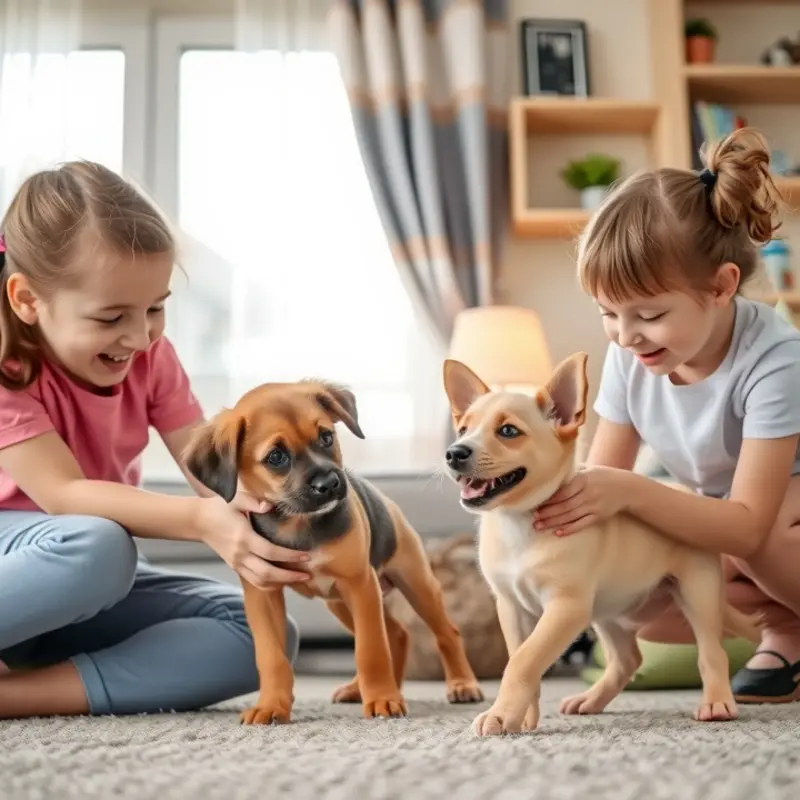
Bringing a foster pet into your apartment can be a joyful experience, enhancing the lives of both your children and the pet. However, nurturing a harmonious environment requires thoughtful preparation and continuous guidance, particularly when involving kids. The key lies in establishing boundaries, promoting safe interactions, and fostering engagement through shared activities.
First and foremost, maintaining a safe interaction framework is essential. Teach your children to approach foster pets gently and quietly, avoiding sudden movements. Encourage them to wait for the pet to come to them instead of forcing interactions. Explain the importance of respecting the pet’s space, especially when it retreats to its bed or a corner. It’s crucial to remind them that, like people, animals need alone time too.
Next, setting boundaries is vital for both pets and kids. Establish rules about where the pet can roam, which could correlate with creating specific areas where the pet feels secure. Use child-friendly language to explain that these zones are a “safe haven” for the pet. On the other hand, train your pet to understand the limits of the home environment—no jumping on the furniture unless allowed, and no grabbing toys from children’s hands.
Training is a two-way street. While you guide your child on how to act around pets, invest time in basic training for the pet to ensure everyone is respectful and well-mannered. Commands like “sit,” “stay,” and “gentle” are not only helpful but also safe. Consistent training sessions will instill a sense of routine and order, easing interactions and minimizing chaos within the apartment.
Encouraging positive interactions through activities can create bonds and memorable experiences. Simple backyard or apartment games like fetch, or a soft toy tug-of-war, can be fun and engaging for both pets and kids. For more confined spaces, consider interactive toys or puzzle feeders that both parties can enjoy together. Additionally, explore apartment-friendly DIY activities that involve both your children and pets, like creating homemade pet treats.
To nurture these interactions, remind your children about the importance of daily pet care routines. Assign age-appropriate tasks, like refilling the water bowl or helping with brushing. This introduces responsibility and accountability, reinforcing the significance of their role in the pet’s welfare.
For families seeking safe and fun indoor activities, you can explore more ideas on our site, such as pet-friendly indoor activities, perfect for rainy days or tight spaces.
By laying a foundation of respect, training, and shared enjoyment, your apartment can become a haven for both children and pets, full of joy and enriching experiences. With these tips, fostering can seamlessly blend into family life, celebrating the unique, joyful bond developed in your shared home environment.
Final words
Bringing foster pets into your apartment can be a fulfilling endeavor that enriches both your life and the lives of animals in need. With careful planning, consideration, and a few adaptations, you can create a safe, welcoming environment for your foster pets and your family. This journey will not only teach children about compassion and responsibility but also bring joy and love into your home. Embrace this opportunity to foster and remember: every little gesture counts in making a difference in an animal’s life. Your apartment can be a sanctuary for both your family and our furry friends in need of a loving home.

